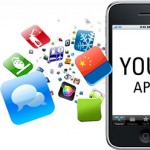The Lingo You Need to Know When Developing an App
It’s no longer a question of whether or not you should develop an app. They are a popular and effective way to connect with customers and clients, so you should definitely have one. Unfortunately, developing an app isn’t necessarily easy. Even if you hire someone else to help, you have to deal with all the lingo they use every time they update you on the development process!
Instead of asking, “What’s that mean?” every time your developer uses a term you don’t understand, make an effort to understand some of the lingo. It’ll make the development process go much more smoothly, and you won’t feel confused and uneducated!
Push Notifications
Chances are, you use push notifications on your phone right now. You just might not realize that’s what they are.
Push notifications are similar to text messages. They appear on a user’s lock screen, and they notify the user that they have received a message from an app. A push notification provides you with the ability to communicate directly with your customers and clients without wondering if they are visiting your app regularly.
Although similar, push notifications are different than text messages in a few ways. Character limits are restricted because the entire message has to appear on a phone’s lock screen. In addition, push notifications are always free, unlike text messages that can cost money for some users.
Users also have complete control over push notifications. They can choose to enable them, or not. It’s your job to develop an app that people want to use so much that they enable those notifications.
User Interface (UI)
You may have heard of the user interface (UI) before. That’s because it applies to more than just apps. It includes all parts that a user can manipulate and interact with. When it comes to apps, that includes things like touch screens, menus, keyboards, and more.
Developers spend a lot of time creating a smooth UI. The success of the app ultimately depends on it. It’s a good idea to test the interface many times before completely launching the app to ensure you work out the kinks and no bugs are left behind.
User Experience (UX)
The user interface and user experience (UX) are directly related. The UI influences the UX.
The UX includes things like the emotions and attitudes a user has about the app they are using, as well as how easy they think it is to use. The goal of your app should be to improve communication between your product or service and the person using the app.
A few ways to increase the UX of your app include:
- Make sure your app loads quickly
- Keep screens uncluttered
- Use high-quality images and videos
- Keep content short and sweet
- Update the app regularly
Hybrid App
Have you heard of native apps? What about web apps? In order to understand what a hybrid app is, you have to understand both terms.
A native app is built for a specific platform and stored on the device.
In contrast, a web app is a website that looks and feels like an app. It is built differently so it isn’t just a hierarchy of linked pages. Facebook is a good example of a web app.
A hybrid app is a combination of both. Hybrid apps work on many different platforms, like computers and mobile devices. They are stored locally on your hard drive, but they are also accessible by a web browser. Amazon is a good example. They are easier for people to use, so they will become more popular in the near future.
Software Development Kit (SDK)
You may hear your developers talk about the SDK from time to time. It stands for “software development kit.” It’s simply the platform that a developer uses to create an app.
However, you have many different choices. Big names, like Microsoft and Apple, offer their own SDKs, but others are developing innovative kits that some app designers like. For example, Square offers an SDK.
Hear them talking about API when talking about the SDK? It’s an interface too, but it’s one that allows software to interact with other software. It stands for “application programming interface,” and it allows programs that speak different languages to communicate with each other.
Don’t feel like an outsider every time the topic of your company’s app comes up! Take the time to understand the terms on this list, and you will be able to understand and contribute to the conversations you have with your developers.















